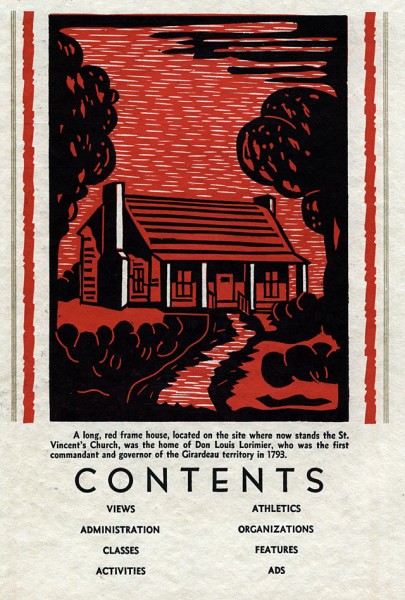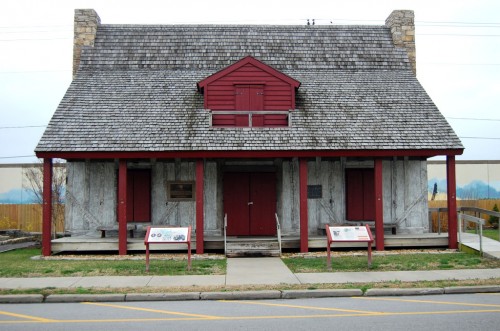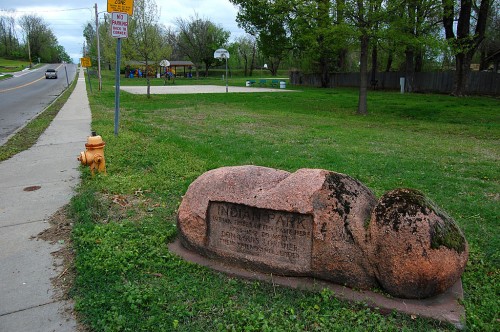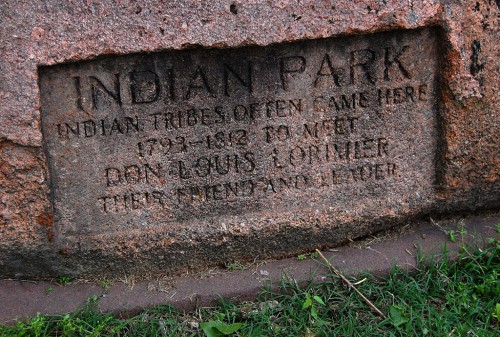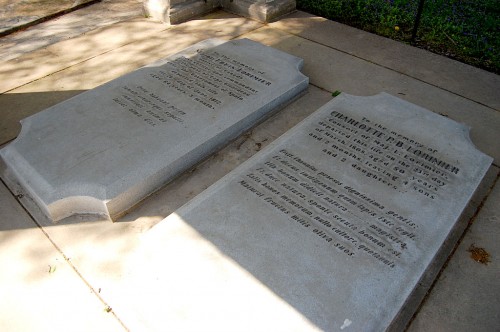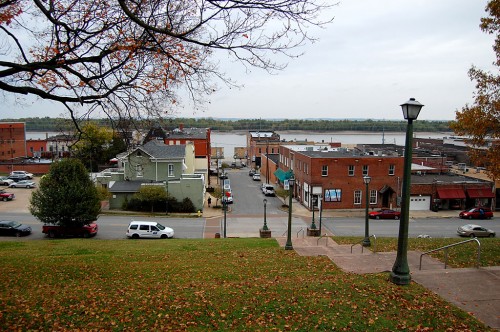 It was a pretty, if chilly, day in Cape, so Missourian reporter Melissa Miller and I decided to walk from the paper downtown to lunch by cutting through the Common Pleas Courthouse grounds and walking down (and up) 55 steps (plus landings). I won the honor by being the 100th person to “Like” her Facebook page. (Here’s how I know it was 55 steps.)
It was a pretty, if chilly, day in Cape, so Missourian reporter Melissa Miller and I decided to walk from the paper downtown to lunch by cutting through the Common Pleas Courthouse grounds and walking down (and up) 55 steps (plus landings). I won the honor by being the 100th person to “Like” her Facebook page. (Here’s how I know it was 55 steps.)
It was a pleasure meeting her after exchanging email and FB messages. It was a bit of a downer, though, when the cashier asked if I was her dad, but I suppose that’s better than being asked if I was her grandfather.
On the way back to the office, I looked around at all of the markers and memorials that I had never paid attention to before.
Research or nap?
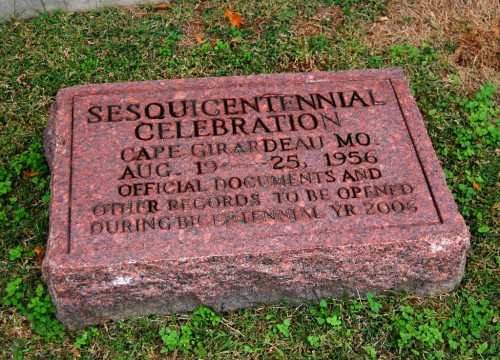 This one is a marks a time capsule right next to the west foundation of the courthouse:
This one is a marks a time capsule right next to the west foundation of the courthouse:
SESQUICENTENNIAL CELEBRATION
CAPE GIRARDEAU MO
AUG. 19 – 25, 1956
OFFICIAL DOCUMENTS AND OTHER RECORDS TO BE OPENED DURING BICENTENNIAL YR 2006
My interest was piqued. What was in the time capsule from 1956? Did they open it in 2006? I did a cursory search of Cape Bicentennial events in 2006 and saw no mention of it. As the afternoon went on, I had to make a choice: continue my research or take a nap. Nap won out. I’ll let someone else tell me if it was opened.
Cardinals to name Mother MVP
You’ll read about the other courthouse markers and memorials later. I couldn’t edit photos, do research and write copy with the Cardinals playing like they did in Game 6. I decided to call it a night after that last homer.
I’m waiting to open the door any minute though, and be visited by a plague of sportswriters carrying a big trophy naming Mother Most Valuable Player. When I took a break, I found her dead asleep with the TV blaring basefall. She and the Cardinals were taking the same approach to the game.
Fortunately, she woke up in the bottom of the ninth, and so did The Birds. I made sure to go upstairs and give her a poke every time the Cards came up to bat after that. I hope I can keep her awake for Game 7.

